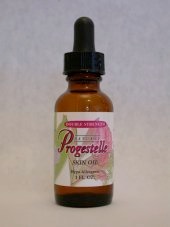

Asking my patient to take a blood or saliva test does not tell me anything most of the time. This is because hormone testing does not measure xenoestrogens (environmental estrogens). In evaluating patients for low libido, I almost never require a hormone test.
For instance, Bloch, MD, a pediatric endocrinologist found that topical lavender or tea tree oil caused “man boobs” in 5 young boys. So lavender mimics estrogen. Lavender looks like estrogen to the body and has a similar molecule to estradiol, but lavender does not have the same exact molecule as estradiol. Thus, lavender is UNDETECTABLE by the laboratory test.
On these 5 young boys with “man boobs”, their hormone tests were normal. The hormone tests revealed nothing. The blood hormone tests were normal.
So what was causing the “man boobs”?
The only thing that could reveal the cause of the “man boobs” was asking whether or not they put lavender or teas tree oil on their body.
A blood hormone test would NOT show lavender or tea tree oil use.
I cannot order a lab test to test for lavender or tea tree oil. The blood lab test for lavender or tea tree oil does NOT exist.
The only way, presently, to find out whether or not the boys put lavender or tea tree oil on their skin would be to ask them. The blood test cannot or does NOT measure tea tree oil or lavender.
Lavender is one of those phytoestrogens that are claimed to boost libido in women and men.
This is the typical refrain from many of my patients. They take a blood or saliva test and see that their progesterone level is zero or near zero. Freaking out ensues. And they demand progesterone.
However, for the vast majority of patients for most cycles but not all cycles over the age of 35, the progesterone level is supposed to be zero. That is what happens normally.
This is because the patient is having anovulatory cycles. This means that for most cycles over the age of 35 the ovary does NOT produce an egg. The ovary does produce estradiol, but does NOT produce progesterone. The cycle “looks normal” to the woman for all intents and purposes, but no progesterone is produced. See all about anovulatory cycles here.
It is normal for a woman to produce little or no progesterone for most of her cycles over the age of 35.
So why does the patient fee lousy?
Why?
The patient feels lousy because there is now no progesterone to balance out the combined synergistic effect of xenoestrogens and estradiol.
You can either take progesterone.
Or you may eliminate xenoestrogens.
Or cut out xenoestrogens and take progesterone.
Thus, a hormone test only measures your own hormones. A blood test does not measure xenoestrogens. Since xenoestogens are causing low libido, the blood test will not help diagnose this.
This is because for most months over the age of 35 you do NOT produce progesterone. However, there are months where you do produce progesterone. On the months, you do produce progesterone, you feel better. On most months you do NOT produce progesterone, you feel lousy.
I used to do hormone testing for women over the age of 35. But it does not help.
Why?
Let’s say the hormone test comes back and progesterone is zero. I tell the patient this is normal for a patient over the age of 35. “You are having anovulatory cycles.”
Let’s say the hormone blood test comes back with progesterone levels that are non zero. So I say, “Your progesterone level is normal and the same as a 20 year old because this month, you ovulated and produced progesterone.”
But the patient says, “ I still feel lousy.” And I answer, “Yup, I believe you. Eliminate xenoestrogen and take some progesterone.”
The patient feels lousy because of the combined effect of xenoestrogens and her own estradiol creating Estrogen Dominance or too much estrogen.
So whether the hormone lab test comes back with zero progesterone or progesterone the same as a 20 year old. I am still going to do the same thing clinically. And this is the correct course of action.
So why do the test?
Saliva Hormone Testing vs Blood Hormone Testing
Topical progesterone cream does NOT appear on the blood test. Most physicians do not know that. So typically, the patient is taking topical progesterone and is beginning to feel better. However, the blood test comes out that there is no progesterone in the blood. But the patient is feeling something, she feels that her sex drive is increasing! So what is going on here? How can the blood test show that there is no progesterone, yet, the patient reports that there is an effect from progesterone?
Progesterone is mixable in oil not water. “Like dissolves like”. Progesterone does NOT dissolve in water. Progesterone dissolves in oil.
The answer is that the topical progesterone is in the oil fraction of the blood. The topical progesterone is in the chylomicrons and on the red blood cell membranes. Chylomicrons are just “little bubbles of oil” that are in the blood.
The blood test measures progesterone in the water portion of the blood. This progesterone is bound to a binding protein to enable the progesterone to dissolve in water. In other words, the binding protein binds to the progesterone and allows the progesterone to mix in water. If you did not have the binding protein, progesterone will NOT go into the water.
So topical progesterone is put on the skin and goes into the body into the oil fraction of the blood. Since oil and water do not mix, progesterone will not go into water (unless there is a binding protein). Thus, topical progesterone will not appear in the blood test because it is in the oil fraction. The blood test measure progesterone in the water fraction.
The blood test will measure oral progesterone. If you take progesterone orally, the progesterone is 90% first pass inactivated by the liver. The remaining progesterone is given a binding protein and allows it to go into the blood in the water fraction.
So how do I measure topical progesterone intake? Simple do a saliva test.
A saliva test will measure topical progesterone and oral progesterone.
However, the blood test will only measure oral progesterone not topical progesterone.


















